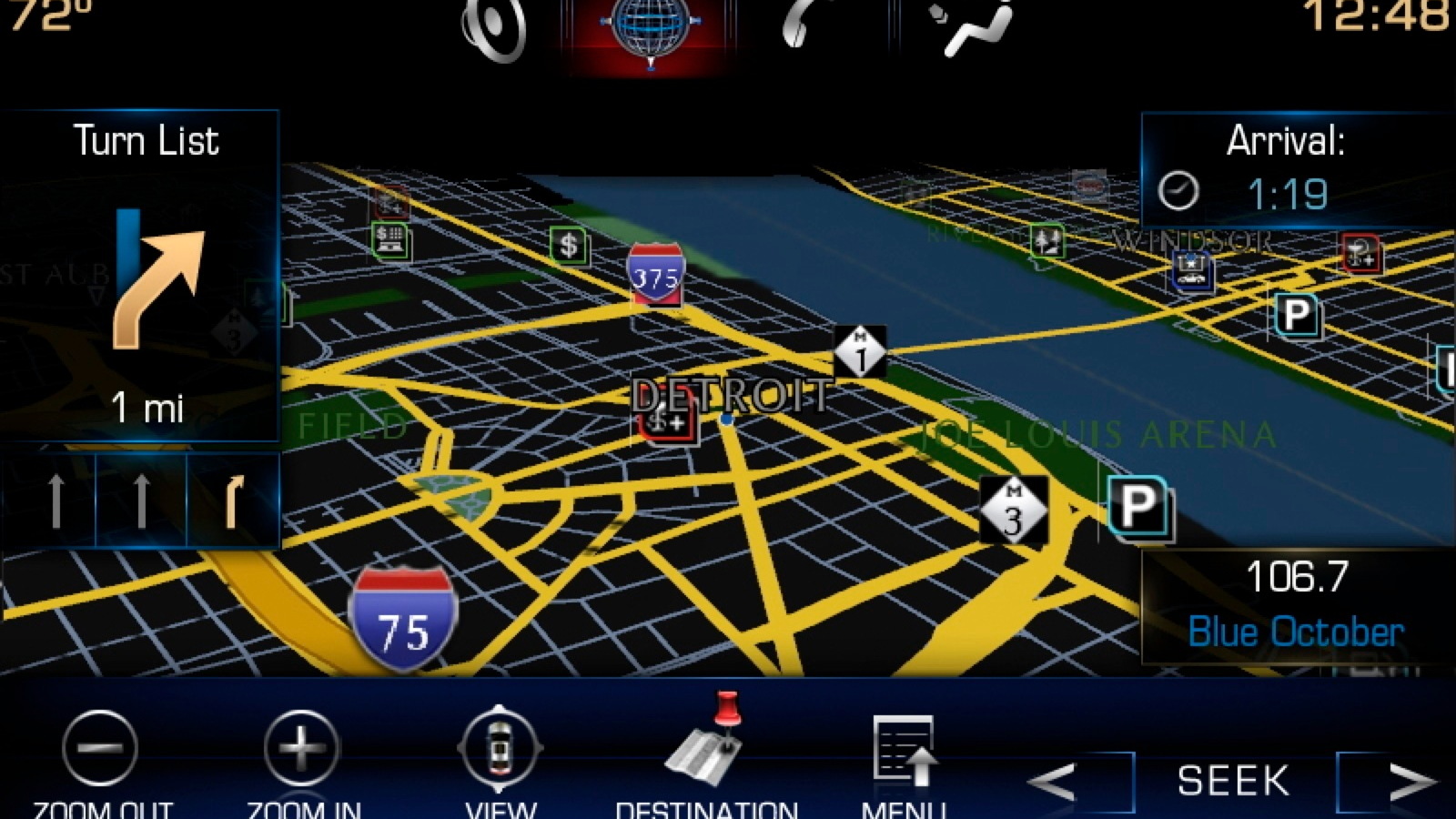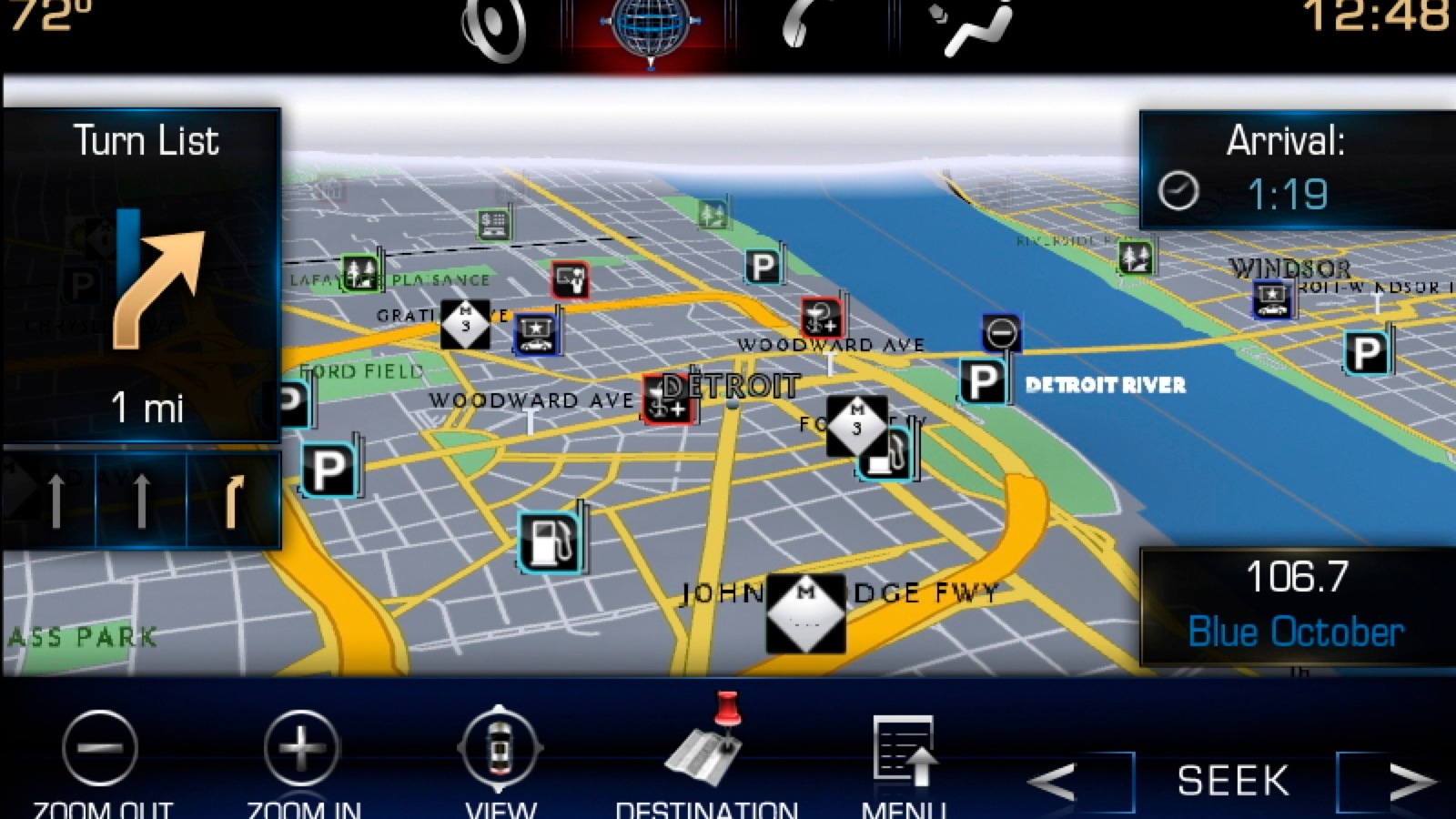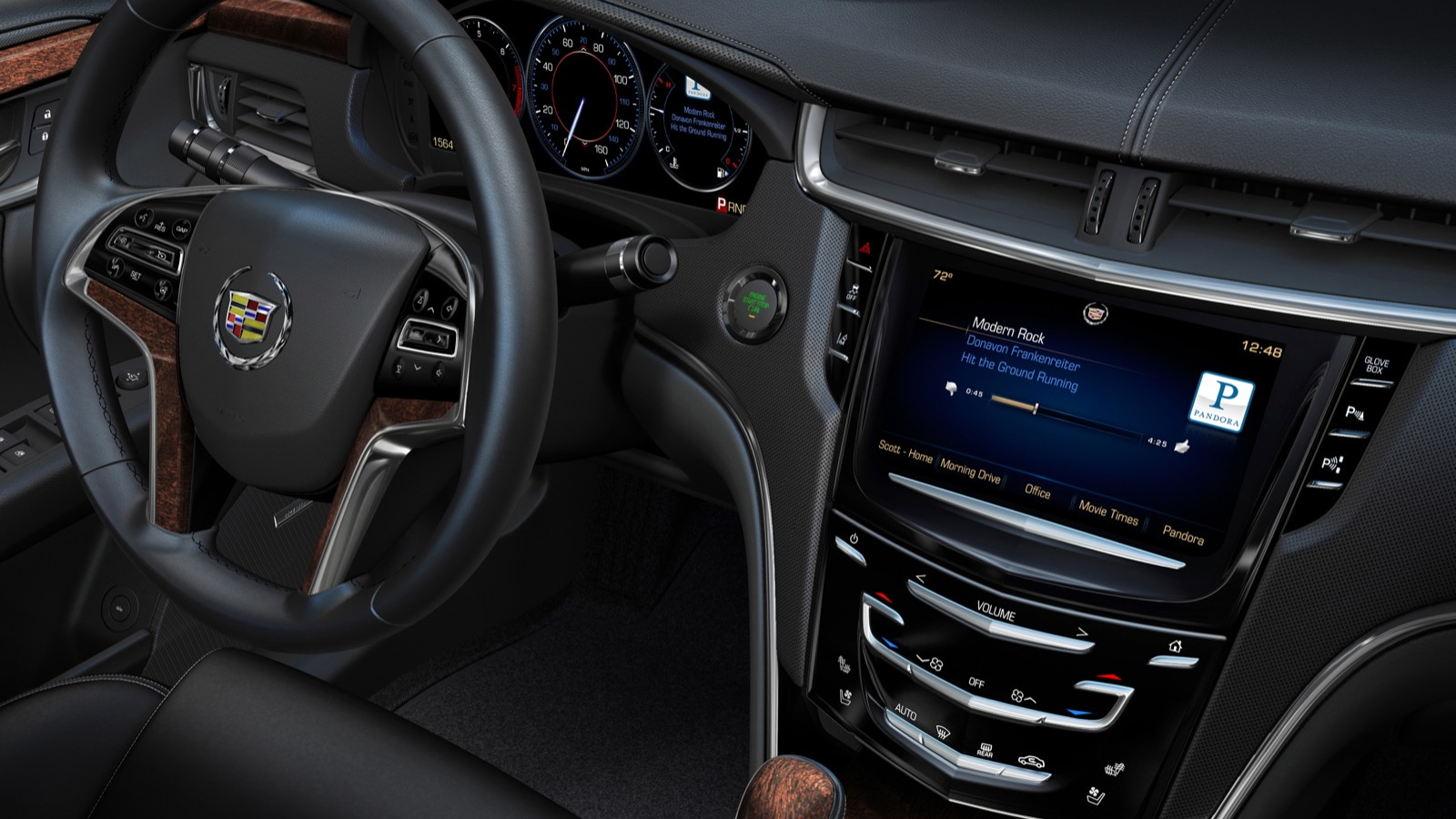Cadillac’s just-announced CUE (Cadillac User Interface) system, which will make its debut in the upcoming 2013 Cadillac XTS, will mark a number of automotive technology firsts.
Firstly, CUE is the first OEM system to use a fully capacitative touch-screen system. Cadillac also says that this is the first automotive touch screen system with the lens over the display screen—mounted over a capacitive film and continuing down through the control plate for a finished appearance.
Sees your hand approaching
The multi-touch interface can recognize all the gestures that are commonly used in smartphones, including tap, flick, swipe, and spread. But one of the of CUE’s many other firsts is a so-called “review on approach” behavior using the built-in proximity sensors.
What this means is that, as you’re driving, with both hands on the wheel, it shows you a minimum amount of information—just what’s playing, and the time, perhaps—but when you take your right hand off the wheel and reach for the screen, right before you touch it a new layer of information and options open up on screen. That feature also includes the opportunity for expansion in the future, developers said, with gestures such as the shake of a hand.
Brightest, clearest screen system yet
The large, 12.3-inch screen that’s to be used by CUE is also the brightest in an automotive application—up to 1,000-nit backlit, which is much more than the typical 550 nit in vehicle nav systems today and about 250 nit for laptop screens. And when turned off, the system is completely black, blending in with the piano-black center-stack control plate that’s just below. And since the capacitive switchplate below the screen is so thin, with the press of a button in the XTS, it will tip away softly and smoothly, to reveal a large, rubber-bottomed storage area with nearly two liters of space.
And the touch-screen system has been engineered to last, and to work in extreme temperatures. As with the capacitive switches in the Volt, the screen and capacitive panel below will even work with gloves up to 5 millimeters thick.
Bosch supplies the control module, while Delphi does the display cluster and Sanyo makes the faceplate. CUE itself was designed and developed entirely in-house, at GM, with a toolkit (EB Design HMI tools) from Finland-based Elektrobit Corporation. Processing power is provided by a robust ARM11 triple-core processor, and memory is expandable. But GM officials emphasize that CUE is as much (or more so) a software platform as a set of future-minded hardware. CUE runs on an open-source, Linux-based platform, with a Java-script, html5-enabled browser for developers. Cadillac hasn’t yet decided exactly how users will upgrade CUE, but the software is full upgradeable.
Improved voice controls for audio, phone
Voice-recognition is provided by Nuance, but with natural-language data gathered by General Motors, asking test subjects questions such as “How do you request music?” According to GM, CUE will be able to deal with statements as well as questions—such as, “I want to hear the Rolling Stones.”
With CUE, the gauge cluster itself can be configured into one of four different configurations—including one for traditional performance gauge readouts, as well as a minimalist layout—but from any of those you can customize. GM has dedicated the left field as an info zone; the center for speed, settings, and nav turn prompts; and the right for audio, phone, and nav displays.
Regarding both voice controls and the menus themselves, the development team tested CUE extensively with drivers, and even went so far as to form eight distinct ‘user personas,’ from simple to super, to make sure that they could get what they needed accomplished without frustration. CUE’s menu system is described as a hub-and-spoke system. The central hub contains six core items—audio, nav, phone, climate, text, OnStar, help, and settings—plus easy access to up to 60 favorites, which you can quickly scroll through, side-to-side, and favorites can be media folders, a contact screen, or even a particular address, for example.
Apps? Why yes.
Somewhat like MyFord Touch and MyLincoln Touch, CUE will work with a host of smartphone-integrated apps—like Pandora streaming audio—and it’s built with enough computing power to anticipate advanced handset and apps several years in the future.
CUE will be available first in the 2013 Cadillac XTS. After that, expect it in the 2014 Cadillac ATS, a refreshed Cadillac SRX (around MY 2014), and then the Chevrolet Volt-based Cadillac ELR. Navigation will come with the XTS system, but in compact models such as the ATS, expect a reduced version of the system (somewhat like what Ford has done in the Focus) that doesn’t necessarily wrap in the navigation system.
-----
General Motors provided accommodation, as well as some food and travel expenses, to High Gear Media in order to facilitate this report.






